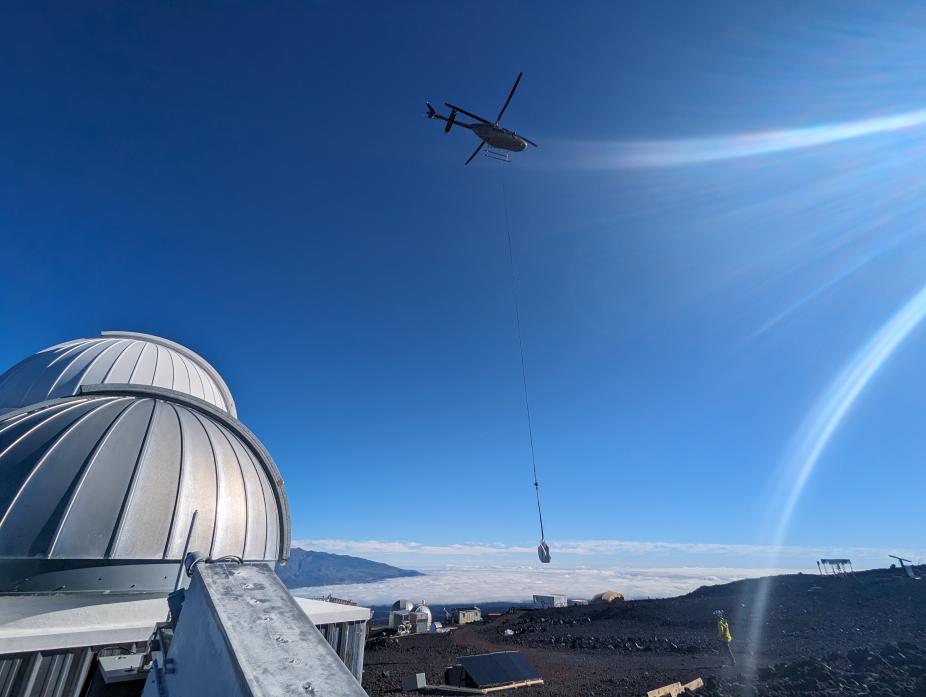
Helicopter flying in batteries and solar panels to MLSO located at 11,200 feet on Mauna Loa. The observatory domes are visible at left.
On April 8, 2024, the day of the total solar eclipse, HAO observers Ben Berkey (site manager) and Lisa Perez-Gonzalez flew by helicopter (the road is still closed due to the volcanic eruption of 2022) to the Mauna Loa Solar Observatory (MLSO) located at 11,200 feet on the north face of Mauna Loa to observe the Sun’s corona using the MLSO coronagraphs. During an eclipse the moon blocks out the bright disk of the Sun making the faint pearly corona visible. Coronagraphs are instruments that create ‘artificial’ eclipse images, using a disk inside the telescope to block the bright disk of the Sun. Unfortunately, clouds prevented observations on April 8, but Ben and Lisa were able to return on April 9 to capture beautiful observations of the corona with both coronagraphs.
The Corona on April 9, 2024
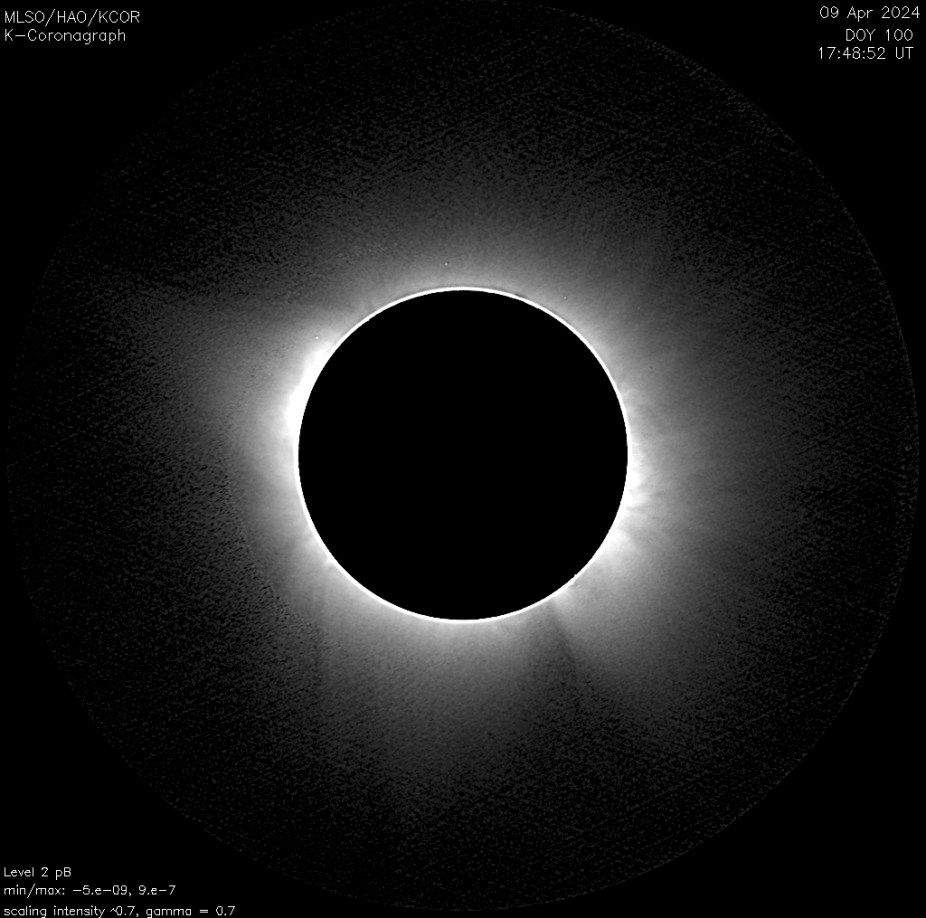
An image of the corona from the MLSO K-Coronagraph (K-Cor) in ‘white light’, similar to what is visible with the naked eye.
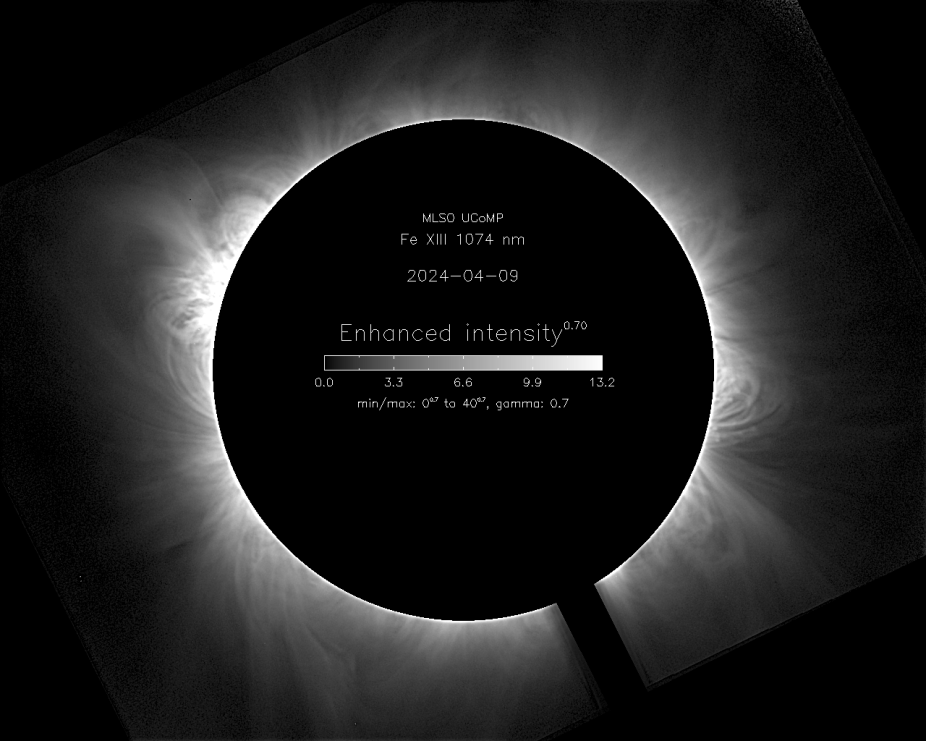
The MLSO UCoMP coronagraph image of the iron emission line of Fe XIII at a wavelength of 1074.7 nm. This emission line captures plasma with temperatures of ~1.6 million degrees. That is hot enough to strip 12 of the electrons from these iron atoms.
About 4 hours of coronal observations were acquired on April 9 with K-Cor and UCoMP. There are different types of data products available online from UCoMP and from K-Cor.
The Solar Cycle
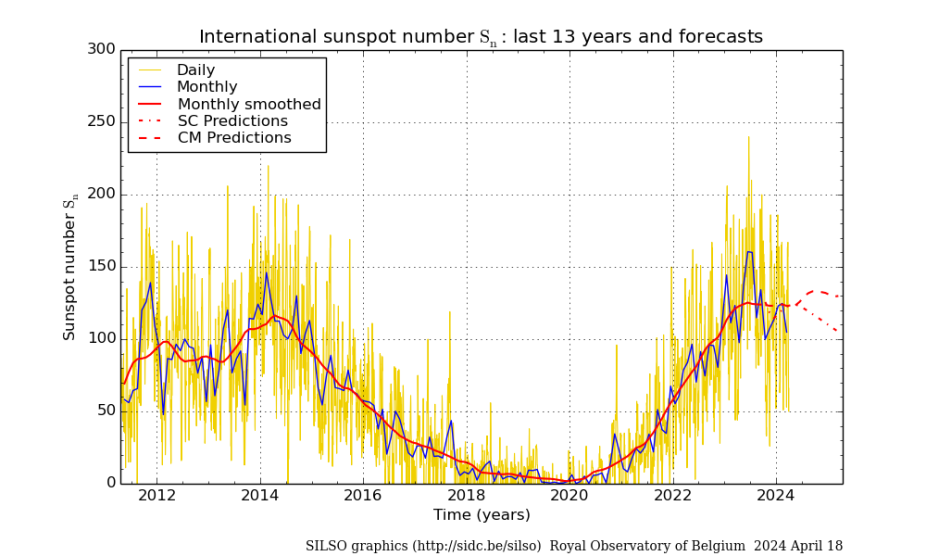
Royal Observatory of Belgium
The April 8, 2024 eclipse occurred very close to solar maximum activity, when the corona tends to be at its brightest. This plot above shows the ’11-year sunspot cycle’. The Sun goes through peaks and lulls in solar activity that last ~11 years. The plot shows the rise and fall in the number of sunspots. Sunspots are regions of very strong magnetic field. Solar activity, such as flares and explosive events known as coronal mass ejections (CMEs), derive their energy from the Sun’s magnetic field. Solar activity rises, on average, with the number of sunspots.
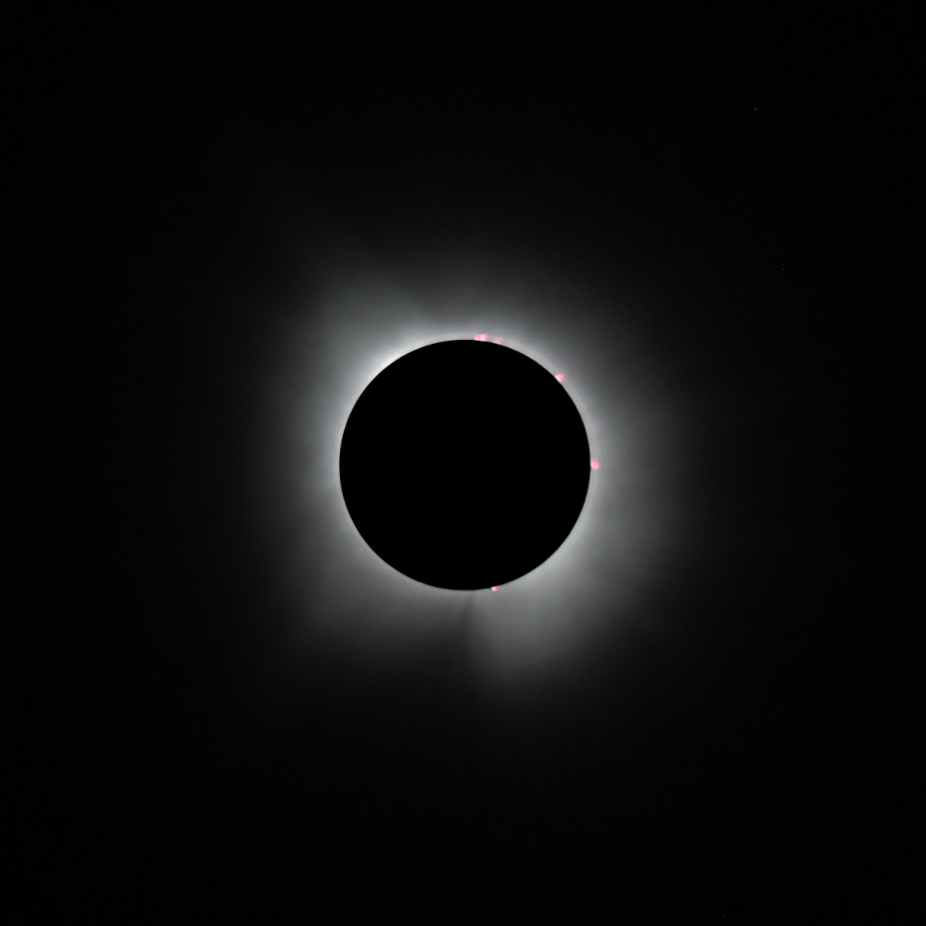
Don Kolinski
The April 8, 2024 eclipse showed a beautiful ‘solar maximum’ corona, with bright structures all around the Sun. Cool, dense structures known as prominences were also visible during the eclipse. This is a photo of the April 8th eclipse by HAO’s Don Kolinski. The reddish-colored structures seen around the corona are prominences. These are often seen erupting as part of a CME. The best chance to see a prominence during an eclipse is at solar maximum.
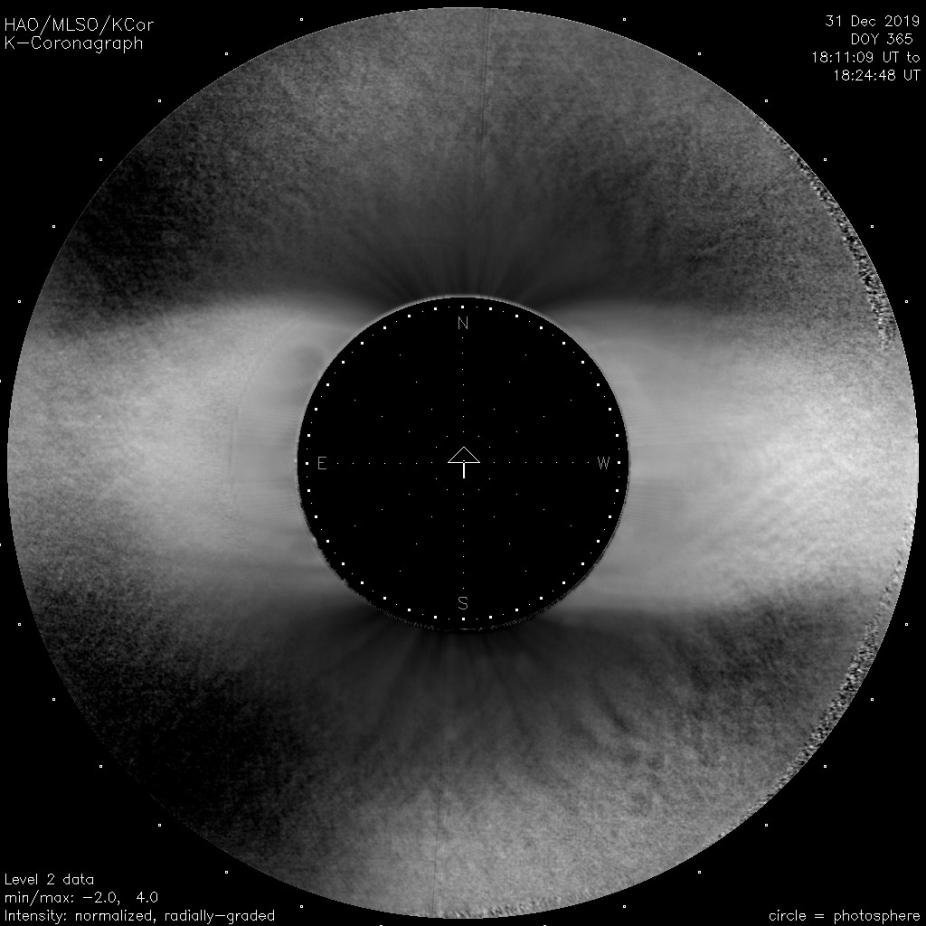
By contrast, the solar corona during solar minimum activity looks very different, as shown in this image, taken by the MLSO K-Cor instrument in 2019 when sunspots were near zero. There are very few bright prominences present at solar minimum.
Scientists are using the April 2024 observations of the corona from MLSO, eclipse experiments, and other ground- and space-based data to study the coronal magnetic field and plasma conditions during solar maximum.
For information on the MLSO observing plan and other eclipse-day experiments and modeling efforts please see the WHPI 2024 eclipse campaign.